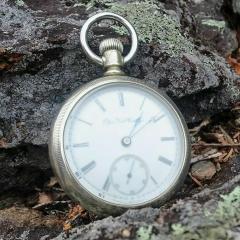-
Recently Browsing
- No registered users viewing this page.
-
Topics
-
Posts
-
By rossjackson01 · Posted
Never. Good comment about the DIY thread. Yes I have seen it. Adapted a few thing to make my own systems of cleaning. Adam and Gentlemen are my 'go to' for inspiration. I only have about 18" by 18" as my working area for cleaning. I have adapted. This is my system. After disassemble and checking I begin the clean with pegwood and lighter fluid. Fiber brush if needed. Everything , except shellac items, balance bridge and pallet fork, into lighter fluid jar. Large items at base and others into baskets. Jar into ultrasonic warm water. 3 x 2 min. Balance and Pallet in small tray and lighter fluid dripped and allowed to gently clean. All blow dried Everything from jar moved into 2nd jar containing Isopropyl alcohol. Ultrasonic 3 x 2 min. Balance and pallet dripped with Alcohol for under 1 min. Everything out and placed under nail blower for 10 min. Before assembly I recheck all parts for damage. This is when I make my decision to order parts as I can see what needs to be done. My system in now pretty good. Well, at least for an amateur. -
By Neverenoughwatches · Posted
Looks good, maybe a little complicated to put together. So certainly some effort, time and headscratching involved if you're not particularly tech savvy. Personally i like the more simple approach of diy cobbling, you dont end up with anything automated so the cleaning operation is a bit more hands on. But you have something simple, cheap, less to go wrong , easy to fix if it does, but in essence cleans just as well. Look at the diy watch cleaning thread Ross, there are some simple ideas in there if you feel you want to make something. -
So you need a 3d printer in order to have this. I wonder is the other parts that you need are available say in the UK because that is where I live. It looks a nice cleaning machine.
-
The case style and the movement are in the style of American. If you take it apart you will need mainspring clamps as the springs are strong and very long
-
By DieselBurner · Posted
Lol! Not even close! 😆 It's a Sam Hueng movement. A Korean firm. So I think this is post-war, 1940-1960? Maybe pre-Korean war since it doesn't say "South Korea?" The chime side winds clockwise, but the power side winds counter-clockwise. Looks like someone has been trying to wind the power side clockwise for who knows how many years and the spring was been unwound to the state you see in the pictures. It doesn't seem damaged though, and I was able to wind it in the correct direction.
-







Recommended Posts